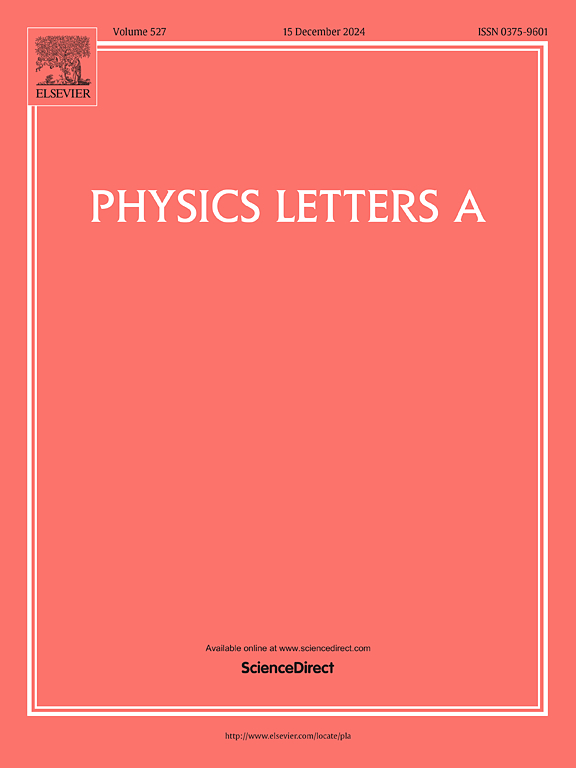Charge resonance enhanced ionization of oxygen molecule in intense laser field
IF 2.3
3区 物理与天体物理
Q2 PHYSICS, MULTIDISCIPLINARY
引用次数: 0
Abstract
The charge resonance enhanced ionization (CREI) phenomenon of O2 is induced by a femtosecond laser field. We measure the time-of-flight spectra of O+ as a function of time delay and find a new structure in the O+ spectrum at a delay of 60 fs. Based on the kinetic energy release of the O+ and motion time of the O2+wavepacket, the CREI process can be divided into two steps. Firstly, O2 is ionized to the a4Πu of O2+, the coupling between the a4Πu and f4Πg happens by the pump pulse, and then the nuclear wavepacket continuously evolves on the f4Πg state in the absence of laser field. Secondly, the probe pulse causes the CREI process between the f4Πg(O2+) and W3Δu(O22+) via the intermediate state 24Πg(O2+). According to dissociation pathway, we utilize classical model to simulate the evolution time of O2+, which is 57 fs, this is in good agreement with the experimental results.

求助全文
约1分钟内获得全文
求助全文
来源期刊

Physics Letters A
物理-物理:综合
CiteScore
5.10
自引率
3.80%
发文量
493
审稿时长
30 days
期刊介绍:
Physics Letters A offers an exciting publication outlet for novel and frontier physics. It encourages the submission of new research on: condensed matter physics, theoretical physics, nonlinear science, statistical physics, mathematical and computational physics, general and cross-disciplinary physics (including foundations), atomic, molecular and cluster physics, plasma and fluid physics, optical physics, biological physics and nanoscience. No articles on High Energy and Nuclear Physics are published in Physics Letters A. The journal''s high standard and wide dissemination ensures a broad readership amongst the physics community. Rapid publication times and flexible length restrictions give Physics Letters A the edge over other journals in the field.
 求助内容:
求助内容: 应助结果提醒方式:
应助结果提醒方式:


